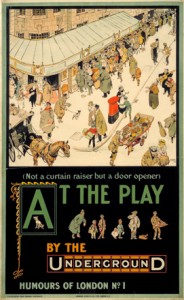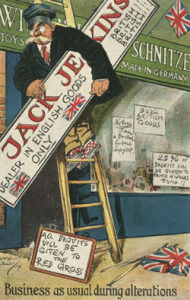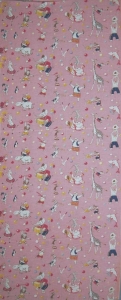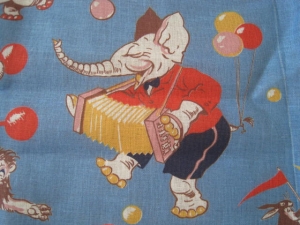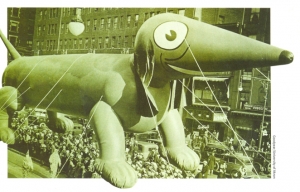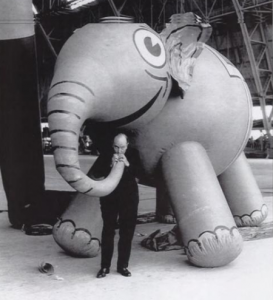While you might not be aware of the illustrator Tony Sarg (1882-1942) by name, some of his work still influences our lives. Sarg was born in Guatemala to a German father and an English mother. Despite his training for a career in the military, Sarg rebelled and instead focused on illustration art moving to London in 1905. In the early teens, Sarg designed over thirty posters for the London Transport, many of which were bird’s-eye views of people on identifiable London streets. If you look closely at these broad views of city streets, you will notice vignettes of people interacting. While in England, Sarg also discovered a life-long passion for puppeteering.
Tony Sarg (1882-1942)
At the Play By The Underground, 1913
Poster for London Transport
Tony Sarg (1882-1942
At the onset of the Great War in 1914, Tony Sarg moved his family to the United States and settled in New York. While he boasted that he never did a day’s work, Sarg’s illustrations and cartoon-like images began to proliferate. He created magazine cover illustrations, illustrated books, designed fabrics and wrapping paper, and animated a series of film The First Circus for producer Herbert M. Dawley. Among Sarg’s areas of expertise was the creation and use of puppets. Sarg had inherited his grandmother’s collection of marionettes and in 1917 he began to produce performances. In 1928 Sarg and his puppetry assistant Bil Baird began constructing tethered helium-filled balloons in the shape of animals for Macy’s Department Store’s Thanksgiving Day Parade. Below are photos of two of their balloons and a poster created by Sarg advertising the parade. Notice that the balloons in the photos are also shown in Sarg’s puzzle illustration of the event.
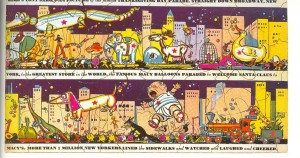
Tony Sarg (1882-1942); Here’s Tony Sarg’s own picture of the famous Thanksgiving Day Parade; Puzzle illustration of Macy’s Parade
By 1935 Sarg was also creating animated window displays for Macy’s holiday window installations. He designed a map for the 1939 World’s Fair and a walking map of Greenwich Village in New York for the Central Savings Bank. Sarg also had a shop in Nantucket, Rhode Island where he sold all sorts of objects he had designed: toys, puzzles, puppets, ceramics, napkins, dish towels, and decorated boxes to name some.
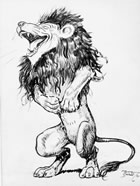
Tony Sarg (1880-1942); Laughing Lion, 1930; watercolor on paper; Collection of the Brandywine River Museum, gift of Jane Collette Wilcox
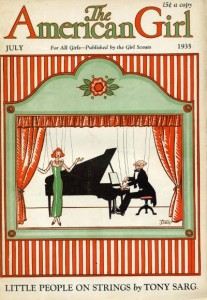
Tony Sarg (1880-1942); Little People on Strings, 1935; Cover illustration for The American Girl magazine (July 1935)
For a man who did not work, he sure produced some wonderful illustrations and illustration related things!
July 10, 2014
By Joyce K. Schiller, Curator of the Rockwell Center for American Visual Studies, Norman Rockwell Museum


